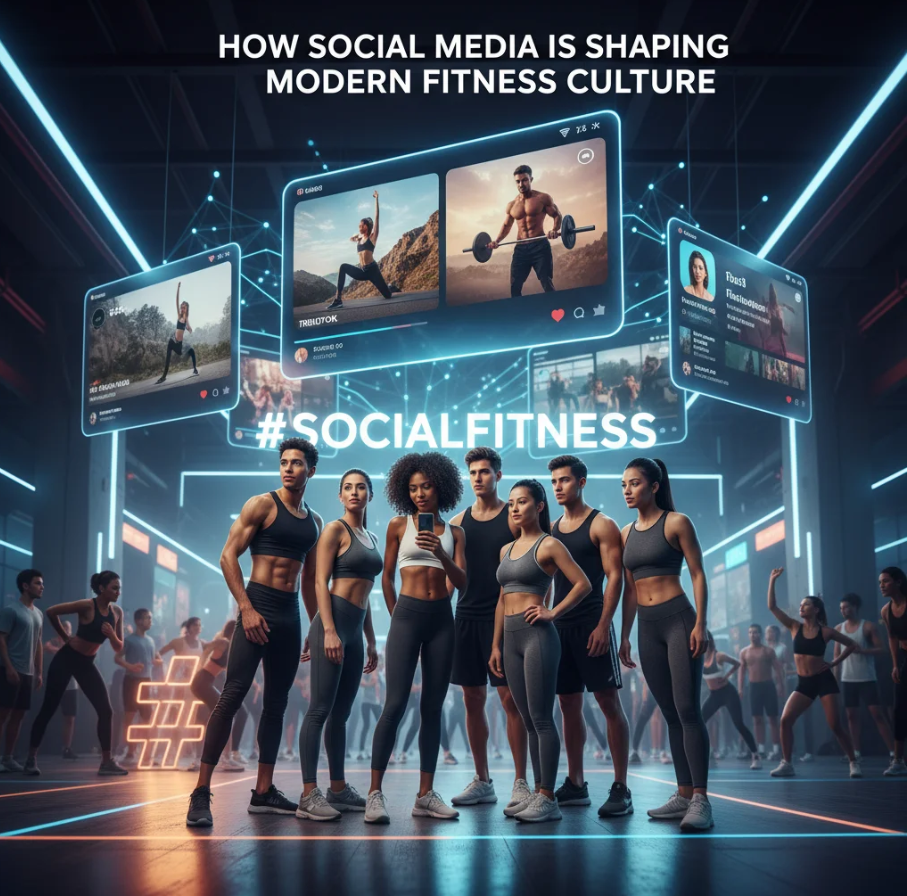xplore the rise of hybrid fitness classes that blend in-person workouts with virtual training. Learn the benefits, challenges, and future of hybrid fitness.
The fitness industry has undergone a massive transformation in recent years. What was once dominated by traditional gyms and in-person group classes has now evolved into a flexible and blended model known as hybrid fitness classes. This approach combines the best of both worlds: in-person training sessions and online workouts, offering consumers unmatched flexibility and accessibility.
The rise of hybrid fitness reflects broader changes in how people approach health, wellness, and technology. This article explores why hybrid fitness classes are booming, the benefits they offer, challenges faced by the industry, and what the future holds.
What Are Hybrid Fitness Classes?
Hybrid fitness classes integrate in-person workouts (such as yoga studios, spin classes, or strength training) with virtual or digital components (like live-streamed sessions, on-demand videos, or app-based programs).
For example, a member might attend a physical yoga class twice a week while also following online workouts from the same studio at home. This creates a seamless experience where fitness is no longer tied to a single location.
Why Are Hybrid Fitness Classes Rising?
1. Impact of the Pandemic
The COVID-19 pandemic forced gyms and studios to close, leading to a surge in digital fitness solutions. Platforms like Peloton, Zoom-based workouts, and fitness apps gained popularity. Even as restrictions lifted, many people continued to value the convenience of at-home workouts.
2. Flexibility and Convenience
Consumers today want options. Hybrid fitness allows members to attend in-person classes when they can, while still having access to workouts anytime, anywhere.
3. Growing Use of Technology
Wearables, fitness trackers, and mobile apps have created a more data-driven approach to health. Hybrid fitness naturally integrates with these tools, making workouts more personalized.
4. Community and Connection
Hybrid classes maintain the social aspect of fitness through group activities and online communities, motivating members even outside the gym.
Benefits of Hybrid Fitness Classes
For Consumers:
- Accessibility: Attend classes regardless of location or schedule.
- Variety: Mix different workout styles (HIIT, yoga, pilates, strength training) without being limited to a single format.
- Affordability: Online options are often more cost-effective than unlimited in-person classes.
- Customization: Tailor programs to personal goals using digital analytics and progress tracking.
For Businesses:
- Wider Reach: Studios can attract members beyond their local area through online classes.
- Member Retention: Offering flexible options keeps clients engaged even when they can’t attend physically.
- New Revenue Streams: Subscription models, on-demand libraries, and virtual memberships diversify income.
Challenges of Hybrid Fitness
Despite its advantages, hybrid fitness also comes with challenges:
- Technology Barriers – Not all consumers have access to reliable internet or devices for virtual classes.
- Consistency in Experience – Maintaining the same quality between in-person and online classes can be difficult.
- Competition – With countless apps, influencers, and platforms, smaller studios may struggle to stand out.
- Engagement – Virtual classes can feel less personal, requiring creative strategies to maintain motivation.
Key Trends in Hybrid Fitness
1. Wearable Integration
Devices like Apple Watch, Fitbit, and Whoop are increasingly used to track performance, recovery, and calories burned during both live and virtual sessions.
2. On-Demand Libraries
Many studios now offer content libraries with pre-recorded classes, allowing clients to work out whenever they want.
3. Live-Streaming with Interaction
Interactive live sessions on Zoom or dedicated apps let trainers provide real-time feedback, bridging the gap between virtual and in-person.
4. Corporate Wellness Programs
Companies are investing in hybrid fitness memberships for employees, blending online resources with local gym access.
5. AI and Personalization
AI-driven apps recommend workouts based on user data, creating more personalized hybrid experiences.
Case Studies
- Peloton: A pioneer in hybrid fitness, offering at-home cycling equipment combined with live-streaming and community-driven classes.
- F45 Training: Expanded their model by providing both in-studio high-intensity classes and digital workouts during the pandemic.
- Local Studios: Many independent gyms now offer hybrid memberships — a mix of on-site access and unlimited virtual classes.
The Future of Hybrid Fitness
As consumer habits continue to evolve, hybrid fitness is likely to become the standard model rather than a trend. Expect to see:
- Greater personalization using AI and biometric data.
- Virtual reality workouts for immersive experiences.
- Global communities connecting members from different countries.
- Holistic health integration, combining fitness with nutrition, mindfulness, and recovery programs.
Hybrid fitness represents the natural evolution of the industry: flexible, inclusive, and technology-driven.
Conclusion
The rise of hybrid fitness classes shows how the fitness industry has adapted to the needs of modern consumers. By combining in-person energy with the flexibility of digital access, hybrid fitness creates a well-rounded experience that works for everyone — from busy professionals to dedicated athletes.
As technology advances and consumer demand grows, hybrid fitness will continue to shape the future of health and wellness, making it accessible, engaging, and sustainable for years to come.
Related Article :














